|
THE ART OF MARCASE
My work is a story of the confrontation between culture and nature and its impact on the plastic arts. It began in 1972. I painted realistic landscapes, almost hyperrealistic panoramas in wich I introduced an abstract painting by Rothco, an abstract expressionist of the New York School. It is a painting within a painting. An abstract painting surrounded by the figurative. (i)
What is the message of this work? Man can not refrain from constant interfering in the development of the environment that surrounds him. He organises nature, he directs it. Flora and fauna must serve him, economically, socially and esthetically. For example a park is laid out. Such an operation has as a consequence for the destruction of the existing vegetation, but at the same time a reconstruction shaped like geometrical avenues, flowerbeds, ponds, lawns etc. Against these interventions nature reacts and resists. Some plants pine, wither away, while others grow up on the border of the flowerbed. The instant that man ceases his intervention, nature begins its reconquest. This confrontation between culture and nature has been translated into my paintings and drawings.
At the same time, I was interested in the philosophy of Friedrich Nietzsche. Nietzsche speaks about an Apollonian and a Dionysian aspect of art, with wich he meant the two opposite sphères of life. Apollo is the god of the clearness and the reason. Dionysos is the god of the spontaneity and the sentiment. Nietzsche has developed these contradictions in several opposite notions: measure versus passion, law versus liberty, cosmos versus chaos, static versus dynamic, etc. In this sense I am confronted with my environment: telephone-posts against structures of trees, delimitations of highways against the natural structure of sand or gras. I don't want that the different elements in my paintings are recognized as things, but that they have a pictural signification. I don't paint a white post against a green bush, but a static white against a dynamic green.I make a pictural translation of reality.
Soon, my own designs replaced those of Rothco. And gradually I allowed the painted mimesis of a real landscape to encroach upon the abstract part of the painting and vice versa. The nature shifts into the culture, the culture into nature. (i).
But for me, the intervention was still too small. In 1976, I placed fragments of nature, usually walls of vegetable matter, its green pigment removed, one above the other in such a manner that the separate, repeated pieces exactly fit together, that they seem to merge with one another. They lose their identity, and together form a repetitive picture. The technique is a collage of lithographs. After a while, I draw on these lithographs. This lyrical addition is compensated by the introduction of a rational element, namely a geometric figure such as a square or a rectangle (i).
At the base of this work, there lies a concept. The idea is more important than the visual perception. It is far removed from the expressionist principle: "I paint as I feel". At the base of my paintings lies the principle: "I paint what I know". My repetitive work has influences from different cultures and disciplines. For example: the geometric works of the Russian constructivist Malevich and the Belgian artist Dan Van Severen. The interweaving, interlacing of an element reproduced many times, usually a geometric motif, is found in Islamic as well as Germanic art . In the seventies I listened to the repetitive music of the American composers Reich and Glass (i).
From the year 1980 my paintings evolved from repetitive to serial pictures.The technique is influenced by the action paintings of Jackson Pollock and the "écriture automatique" of the Belgian CoBrA artist Christian Dotremont. Also the oriental calligraphy had influence on my art. The material that I used ranges from airbrush-pistols and brushes, to sticks, rags and my own fingertips. The first is the most technical instrument, the last the most physical. Also in the material there is an opposition. But every instrument that I used, including the pistol, is just a tool, simply an extension of the hand and the hand an extension of the mind.(i)
The painting itself is constructed in layers. First onto the canvas come colors in red, yellow and blue touches. Then follow nuances in grey colors and in different transparant layers. The result of both phases is a softening of the violent start. To achieve an effect of freshness, the number of layers is very important. If there are too much layers, the painting loses his liveliness. If there are too little, the painting has too little power. This requires much concentration and an intense physical involvement.
The next layer is a latticework of lashes, strokes from the brush and scrapes from the stick. Sometimes I used my fingertips, an act that you can also see by action painters. Like a graffiti painter inscribing city walls with a spraycan, I added accents and lines with a decoration pistol in the completion of the canvas. The number of actions varies between five and ten.(i)
In 1986, my mother died. This gave a rupture in my work. I made a series of pictures in mixed media, named "Kruisweg voor mijn moeder" (Way of the Cross of my mother). The sign of the cross breaks up. These works have one single characteristic of the Neue Wilde; not their way of painting but the blow up of the movement and the energy. These works have also the duality between dynamic and static, unrest and rest, hard and soft. These works are cerebral of conception and lyrical of realisation. The touches work as scars into the pictural canvas. These works form a counterpoint to the works of the 90's. (i)
In the 90's, I broke the evolution by introducing early work in a new entity next to recent realisations. What existed on it's own before, as an entity, is now boarded and creates a new unity. Both levels of painting are grafted upon each other. In this way their meaning has grown together. (i)
In this work, I show a fundamental interpretive characteristic of the human view on reality. In this way, my work becomes a metalinguistic art, a reflection of art on art. By grafting an earlier work upon a later one or vice versa, a new relationship originates between them, what the philosopher Nelson Goodman calls a patern-card versus the world to which these cards refer. The existing work loses its meaning, because it is torn away out of his preceding context, by which the very significance is generated. This disruption however unchains a new meaning. First alienating by the dislocation, then suddenly opening a new meaning by juxtaposition. The older work becomes an example of the principles that exemplify the new work. The exemplification signifies, as in a pattern-card, that some features stand out more clearly.
With this work, I fully join the fundamental art of painting. The art of painting, in search of his own fundaments, but luckily finding only a part, a pattern-card of them. These paintings are referring in twofold. First, they show the elements of the pictural qualities: soft or rough texture, densily covering or transparant density. Secondly referring to different styles of art or at least to two opposite ways of painting, in which the same facts are differently interpreted.(i)
My art does not depend on pro- or antitraditional elements, but rather on the mental-plastic question of the work of art. The idea of perpetually moving forward, of pushing the limits, as happens in science, is of minor importance in art. Science is a process of becoming, art is a process of de-becoming. Science is trying to control the world, art is trying to liberate it. This is why it is important to pay attention to the attitude of art, which has remained unchanged since the beginning of human life: to communicate with life in a more intense way.
|
|
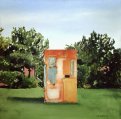    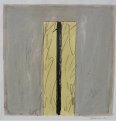 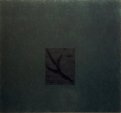 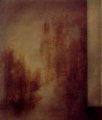 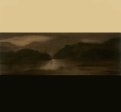  |